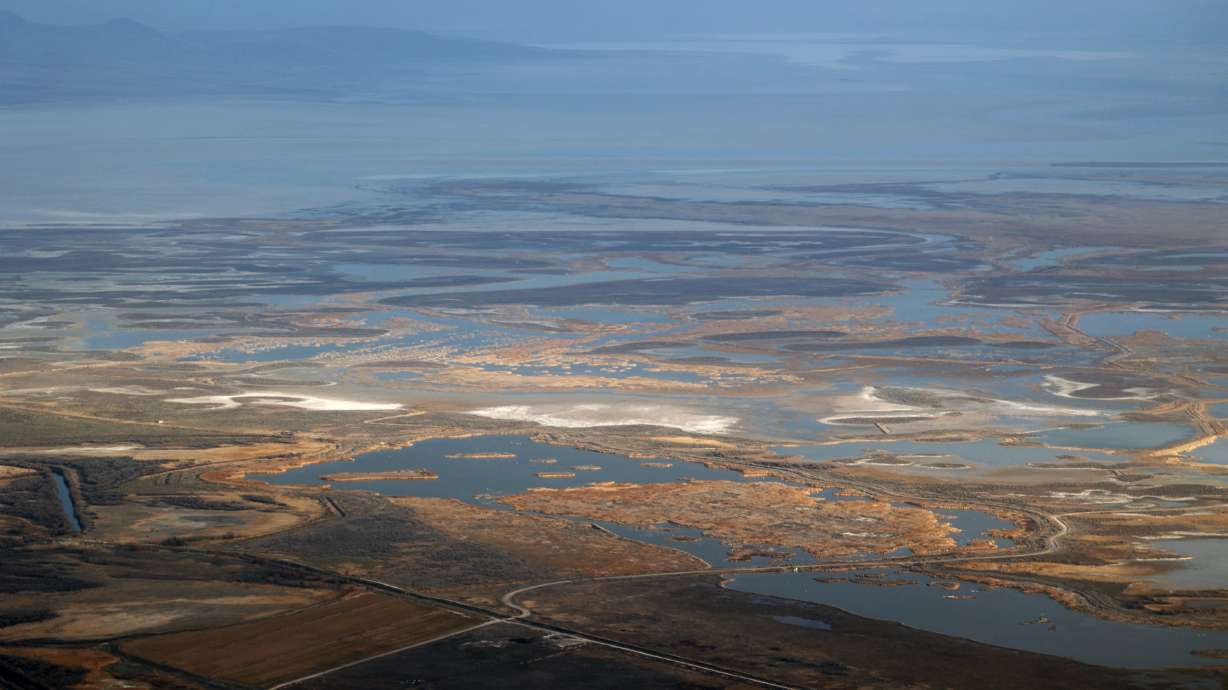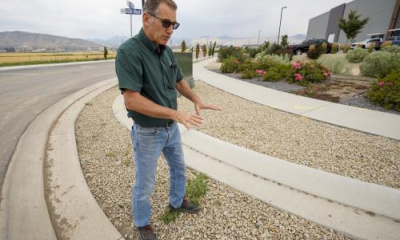SALT LAKE CITY — Utah legislators approved an unprecedented $40 million that will go solely toward enhancing the Great Salt Lake watershed during the state's legislative session earlier this year.
The bill, HB410, which didn't just pass unanimously but was co-sponsored by nearly every member of the Legislature, outlined that a conservation group would oversee the new Great Salt Lake Watershed Enhancement Program. State officials on Thursday announced that they are handing the reigns of the new program over to the National Audubon Society and the Nature Conservancy as operations get going.
The two organizations will use the money to help enhance the drying lake's water quantity and water quality, according to officials with the Utah Division of Forestry, Fire and State Lands. At least a quarter of the $40 million will be used to "protect and restore wetlands habitat to benefit the hydrology of Great Salt Lake," as well.
"Today's selection of Audubon and (the Nature Conservancy) as co-managers of the Great Salt Lake Water Trust reflects both organizations' scientific expertise, nonprofit credibility, commitment to collaboration, and long-standing conservation record at (the) Great Salt Lake," said House Speaker Brad Wilson, R-Kaysville, who was the primary sponsor of the bill. "The establishment of the Great Salt Lake Water Trust is a crucial step in preserving the lake and its wetlands for the future of Utah."
Thursday's announcement comes as state land managers previously projected that the lake will drop another 2 feet this year, to a new record low. The receding Great Salt Lake comes with a slew of issues, including higher risk of exposure to the toxic lakebed, impacts on wildlife and even reduced snowpack, among other concerns.
Jamie Barnes, the division's director, said in a statement that the lake's historic low water levels are "threatening the health of Wasatch Front residents, the future of key Utah industries and the survival of millions of migratory shorebirds and other wildlife."
"This trust dedicates significant funding and establishes a partnership to tackle ongoing challenges like drought and increasing water demands," she added. "Utahns need collective, watershed-wide solutions before it's too late."
Dave Livermore, the Nature Conservancy's Utah director, calls the partnership with the Audubon Society and Utah is an example of the "all hands on deck" approach needed to help save the Great Salt Lake before the environmental impact worsens. The program's primary focus will be to retain as much water already in the lake while also enhancing water flow to improve it, added Marcelle Shoop, the director of Audubon Society's Saline Lakes program.
The two groups will try to achieve that goal by securing water rights from farmers, or anyone else who has rights to water, that could otherwise flow into the Great Salt Lake. Shoop acknowledges it's a complicated process that takes time, which is why the program may start by seeking temporary lease changes that can "be done in a fairly rapid period of time," so they can cut to the chase.
"Obviously, the closer the water right is to the lake, the easier it will be to manage the shepherding of the water," she said.
This approach is considered the "single most important strategy" in preventing further drying, according to state land management officials. More ideas are expected in the coming months as the program gets going.
The Nature Conservancy and Audubon Society have each spent years focusing on the environment of the Great Salt Lake, which attracts over 10 million migratory birds every year. The two organizations even collaborated with state and federal agencies and local businesses to acquire 21,000 acre-feet of water rights to Farmington Bay last year, following two years of negotiations.
Shoop contends that birds are often indicators of environmental health. When they disappear, there's likely something serious happening. It's why she believes caring for the birds ultimately translates to the greater good of everyone — and every species — who live by the lake.
"One of the things that birds tell us is, if you can protect birds, you protect people," she said.
Gov. Spencer Cox said Thursday, during his monthly press conference with Utah media earlier in the day, that more efforts are on the horizon to help protect the lake, including more funding in the future for studies and projects. The research can help figure out exactly what projects are needed to help restore water levels.









